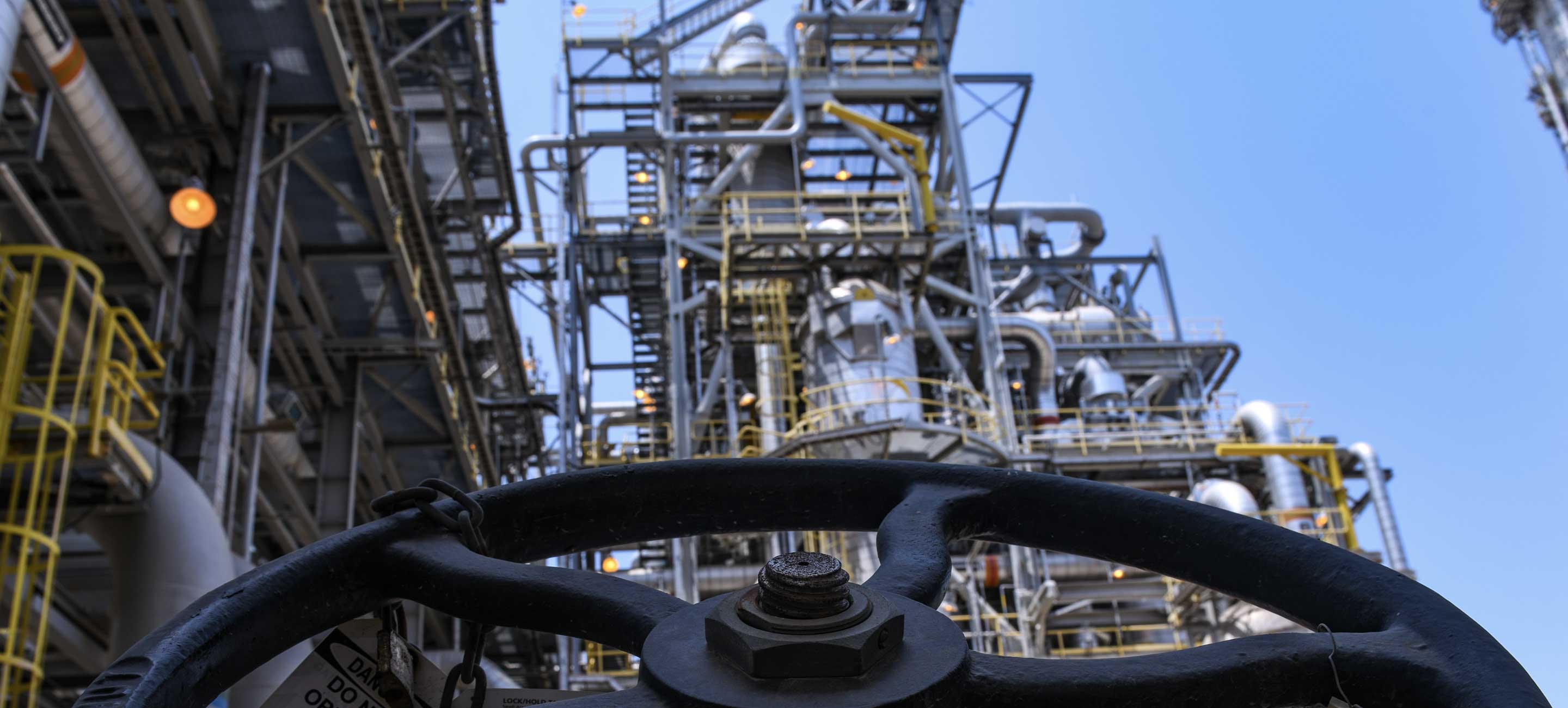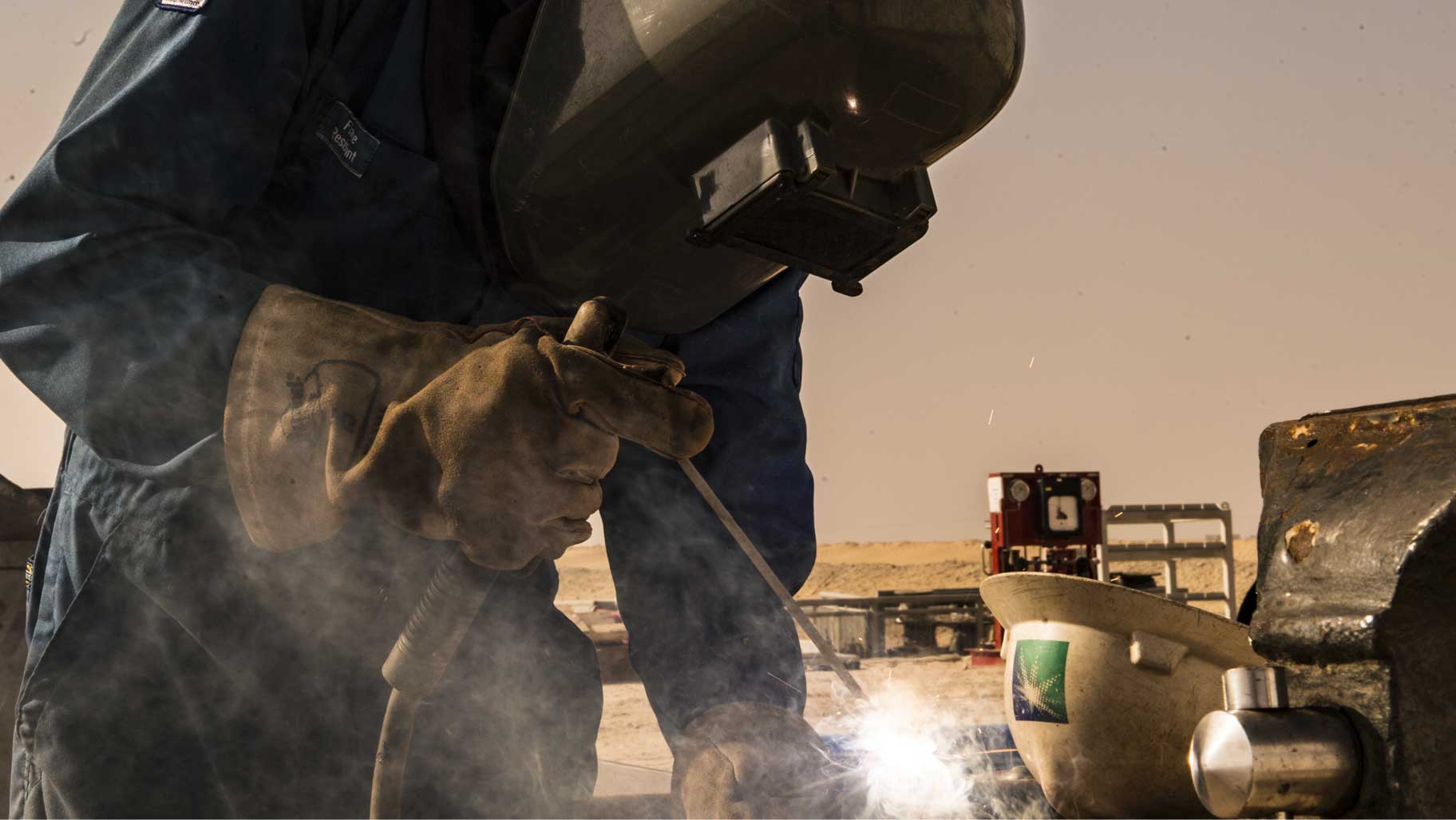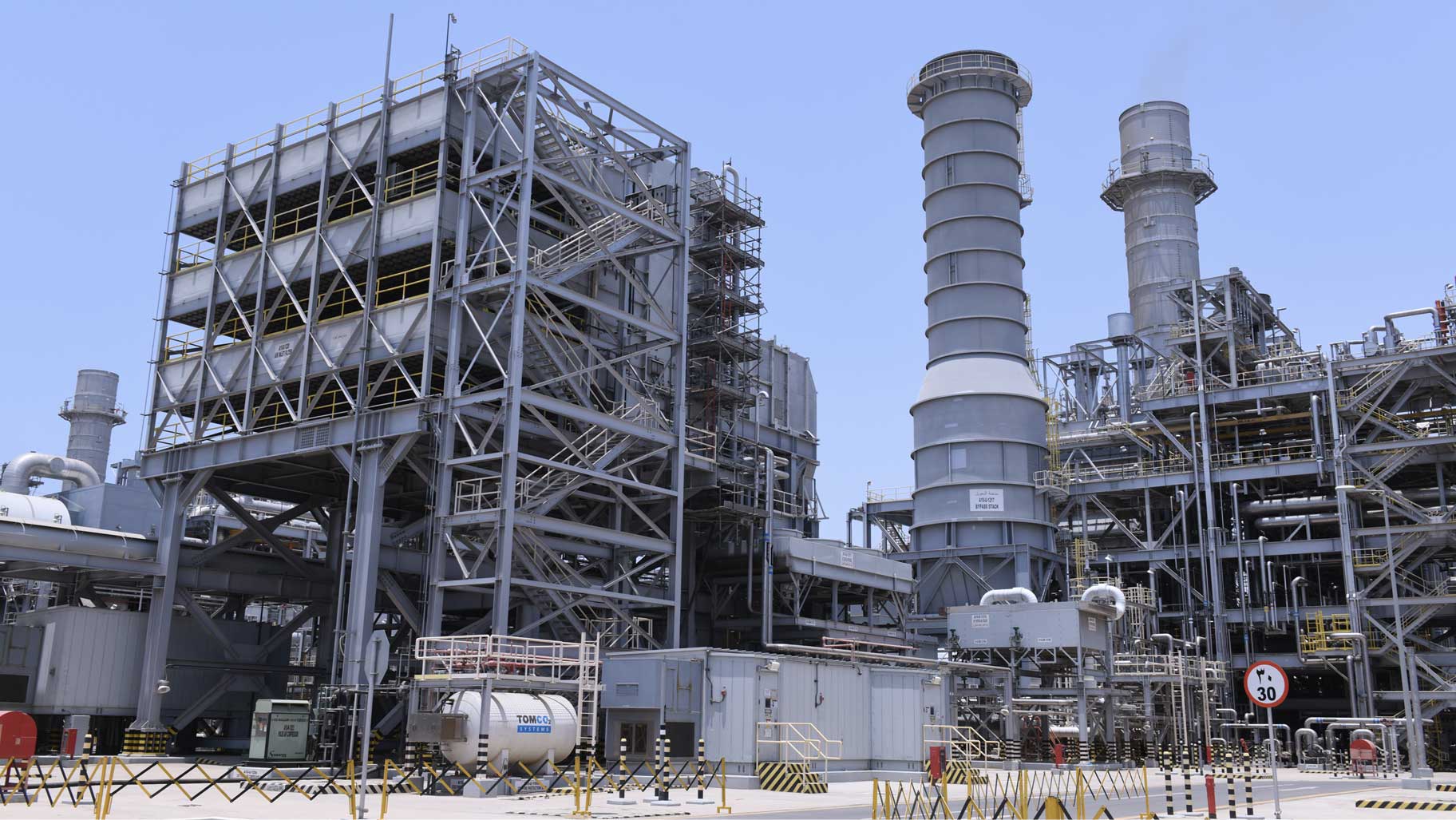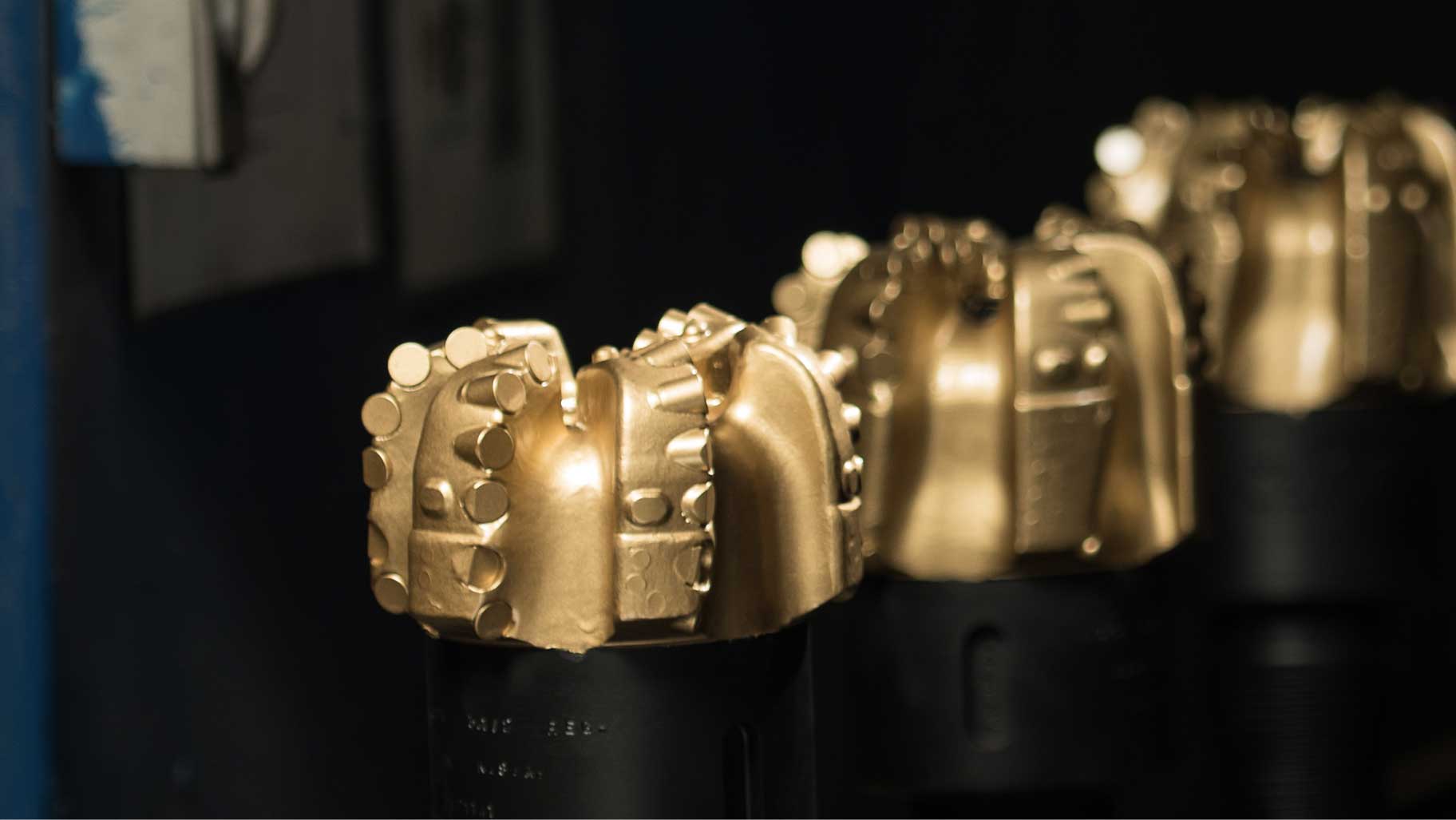Jazan — our new smart self-powering refinery
Jazan Refinery Complex was designed to expand the development of the region while also creating a diverse portfolio of products.

- The Jazan Refinery Complex is expected to play a leading role in the region's economy
- The oil refinery is designed to process up to 400,000 barrels per day, while the integrated gasification combined-cycle (IGCC) plant generates power and a range of downstream products
- By exploring new cutting-edge technologies for by-product recycling and waste power re-capture, the Jazan complex aims to achieve improved productivity while operating with lower emissions
In 2006, Saudi Arabia drew up ambitious plans to build a new industrial city in Jazan, in the far south-west of the Kingdom. The main aim of this initiative, the Jazan Economic City Project, was to expand the economic development of the region.
At the heart of the project is Aramco’s fully integrated Jazan Refinery and Petrochemical Complex — the result of an estimated $21 billion of investment — which, when operational, is expected to produce both high-value products, and power, in a more sustainable way.
Boosting power, meeting energy demands
The Jazan oil refinery, which is designed to have an output capacity of up to 400,000 barrels per day (BPD), is a vital part of the set-up. This full-conversion refinery, when it is at its full capacity, is planned to have a wide portfolio which includes gasoline and ultra-light sulfur diesel (ULSD), as well as benzene and paraxylene. It is expected to provide feedstock for the integrated gasification combined-cycle (IGCC) plant, which generates power and industrial gases.

Meeting the needs of an expanding local economy
The IGCC is the largest plant of its kind in the world and capable of producing up to 3.8 GW of power. This is enough to not only meet the energy demands of the plant itself, and those of expanding local industry, but also to provide power to millions of nearby homes.
Harnessing technology: one plant, many products
Sustainability and the use of smart, integrated technologies are the driving force behind this new facility. Jazan’s gasification plant, for instance, is designed to transform the low-value, heavy ends (the high-molecular-weight, high-boiling-point components) of refined crude oil into higher-value products via the gasification process.
In this process, synthetic gas known as syngas — which mostly consists of hydrogen — is produced, and then treated to remove impurities, to create a 99.9% hydrogen gas. This pure hydrogen product is then utilized in the desulfurization of refinery products, resulting in the creation of lower-sulfur fuels, such as ultra-low-sulfur diesel and gasoline.
Repurposing unused heat
Syngas is also produced via the gasification of vacuum residue, a low-value product typically used as a fuel oil for industry and shipping. The hot syngas stream that’s produced by gasification must then be cooled down before being processed. However, this heat is not wasted.
During the cooling process, the energy contained in the heated gas stream is recovered in the wash water filtration system, which works to remove particles that can impact downstream operations. The hot syngas flows through an economizer, and exchanges heat with cool, demineralized water, to produce steam.
The plan is to capture the refinery’s waste steam, and use it to drive turbines to create electricity in the power generation plant. This waste steam is extremely high temperature though, far higher than required to turn the turbines, this means the process could still result in a significant waste of energy, but, at the Jazan refinery, it is instead absorbed and put to use by heat recovery units.
Maximizing efficiency, thinking sustainably
Many aspects of the Jazan refinery’s operations have been considered with sustainability in mind, with the ambition of boosting efficiency while reducing carbon emissions.

Many aspects of the Jazan refinery's operations have been considered with sustainability in mind
The complex’s soot ash removal unit, which lowers dust emissions into the atmosphere, is a good example. At some other facilities the dry ash collected during this process would typically be disposed of in landfill. At the Jazan refinery, the dry ash produced will be passed on to a specialist operator to extract the trace metals (nickel and vanadium) contained in this ash.
In this way, more than 7,200 tons of nickel (used for coins, batteries and strengthening steel) and vanadium (alloyed with steel for hard-wearing tools, jet engine and car parts, and machine components) is expected to be extracted from the Jazan refinery’s dry ash each year.

Vanadium – when alloyed with steel – can be used in in machine components. Vanadium is expected to be extracted from the Jazan refinery’s dry ash.
By conserving energy, and reusing by-products whenever possible, the Jazan refinery’s operations aim to demonstrate how industrial efficiency and sustainability can go hand in hand.
Powering the Kingdom
Aramco’s investment in the Jazan Refinery Complex highlights our determination to support the Kingdom’s vision for Jazan City, and the surrounding region, to become a more prominent and more diversified economic hub.
The Jazan complex is helping to realize this vision — providing direct employment for more than 1,300 Saudis, helping to attract investors by providing the infrastructure and resources they require, and by bringing a wealth of new ideas and expertise into the region.
A model for the industry
The Jazan complex is expected to do more than simply refine oil. It is expected to find ways to lower production emissions and boost energy efficiency, while also turning low-value or waste products into new and valuable end-products in their own right.
The Jazan complex aims to show what is possible when the latest industrial processes and 4IR technologies are harnessed in every aspect of a fully-integrated oil refinery and power plant, and provide a model of the better, smarter, and more sustainable path forwards for the industry.
More from Elements
The material in this article is intended to be for general informational purposes only, and readers should not place undue reliance on the statements or opinions therein. Any information provided speaks only as of the date this content was published and Saudi Aramco undertakes no obligation to correct, update, or revise any statements or opinions made in or implied by this article.



